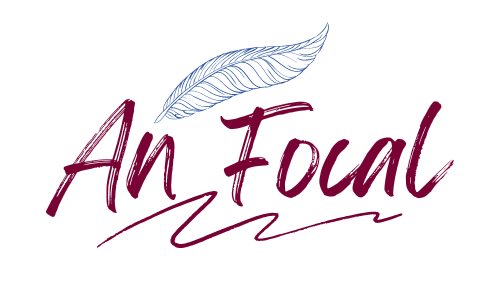by Olivia Hoysted
Captivating the political and private life of the English Monarch, Netflix’s The Crown is a drama sweeping over the 20th century and exploring into the life and reign of Queen Elizabeth II. According to statistics released by Netflix, the drama starring performers such as Claire Foy, Olivia Colman, Matt Smith and Tobias Menzies has had 73 million household viewers worldwide. Over four seasons, this production by Peter Morgan informs us about historical events in England throughout
Queen Elizabeth’s life as well as giving us an insight into the private life of the Royal Family.
The Crown grips it’s audience with a historically accurate perception of many events during Queen Elizabeth’s reign and it also provides entertainment on an overly dramatic private life. The depiction of the Royal Family makes the series controversial, as they are portrayed in a fictional light and therefore how the members of the Royal Family treat each other during the series is inaccurate. According to Hello Magazine, a Royal insider described how ‘the whole family are portrayed as bloodthirsty, murdering beasts with no ability to empathise.’
The Crown highlights many events that occur around post-war Britain. In season one, we see the accurate events of The Great Smog of 1952 and the private affliction between Princess Margaret and Group Captain Peter Townsend. Although the hysteria around The Great Smog is exaggerated, parliament acted after the event introducing bills to decrease pollution emissions. Churchill’s secretary Venetia Scott (Kate Phillips) was a fictional character created by Morgan to emphasise the tragic event in history. Unfortunately, the heart-breaking love story between the Queen’s sister and Group Captain Townsend is mostly accurate as the pressure from both the State and Monarch was overwhelming and so, breaking off the engagement was inevitable for the couple.
The series shows the early years in Queen Elizabeth’s marriage to Prince Philip in the second season, focusing in on the conspiracies around Prince Philip’s life. The series dances around the theme, neither confirming nor denying affairs for which there is no evidence for. This season also sheds a light on Prince Philip’s traumatic childhood and his education at Gordonstoun. To show the Prince’s grief for his sister’s death, The Crown invents the idea that the young Prince constructed a wall. Another controversial issue is that the Prince is blamed for his sister’s death in the series for which he is not.
Reflecting on their lives, season three investigates into Queen Elizabeth’s (Olivia Colman) questions, Prince Philip’s (Tobias Menzies) search for meaning and Princess Margaret’s (Helena Bonham Carter) heartbreak. Commencing with the revelation that British art historian, Anthony Blunt was a Soviet spy, this riveting season explores many other historical events that happen in the latter half of the 20th century. When introducing us to the tragic disaster of Aberfan, The Crown was accurate in Queen Elizabeth’s regret in not visiting the mining village sooner.
Another interesting accuracy in The Crown is the awkward tuition between Prince Charles (Josh O’ Connor) and Welsh nationalist Edward Millward (Mark Lewis Jones) when he travels to Wales. We are also brought into the fascination that Prince Philip obtains from the Moon Landings in this season. Besides the lack of evidence for this obsession towards the Moon Landings, Buzz Aldrin, Neil Armstrong and Michael Collins visited Buckingham Palace. The fourth season of The Crown is controversial. Although both Prince Charles and Princess
Diana are both shown having affairs, The Crown shares the fictionalised portrayal of Princess Diana’s treatment by both Prince Charles and the Royal Family. In accordance with this, RTE reports that friends of Prince Charles have stated that the show is ‘dragging up things that happened during very difficult times 25 or 30 years ago without a thought for anyone’s feelings.’ Apart from embellishing the private life of these members of the Royal Family, The Crown also focuses on the factual IRA Fact/Fiction piece on The Crown Olivia Hoysted bombing on Lord Mountbatten’s (an uncle to Prince Philip) fishing boat and the two visits made by Peter Fagan to Buckingham Palace. Highlighting problems associated with unemployment, we see
Fagan’s slightly exaggerated conversation with the Queen. The Queen has never spoke publicly about it, but protection around the palace was re-enforced after the incident.
The Crown depicts a dramatic relationship between Prime Minister Margaret Thatcher (Gilian Anderson) and Queen Elizabeth as being stiff and undynamic. This isn’t exactly inaccurate and therefore their personal relationship was fractious in parts, but despite that they were born six months apart which meant they embraced the same generation. Although they did disagree on political issues such as the South African apartheid and the English Commonwealth, they maintained a stable relationship. Thatcher received the Order of Garter and Merit which is seen in The Crown. Over the nineteenth century, Queen Elizabeth has had interactions with fourteen prime ministers and has attended the funerals of Winston Churchill and Margaret Thatcher.
The Crown is a production containing many facts and dramatic inventions. It is important that this series is viewed as a show providing entertainment through the invention of conversations and relations. We can also look at this show as portraying some factual historical events of Queen Elizabeth’s reign despite its compelling dramatic qualities which inevitably make it a drama. Besides the many controversial arguments over how the Royal Family are portrayed in The Crown, it can’t be denied that The Crown shows the challenging lives held by the English Monarchy during the 20th century. As the Daily Record reports, ‘The Crown series is a drama, not a documentary and much of the storyline is clearly imagined for dramatic effect.
![]()


